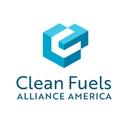EPA approves new fueling configuration for E15

February 7, 2013
BY Erin Voegele
On Feb. 7, the U.S. EPA approved a new blender pump configuration for the sale of E15 and E10. The configuration, submitted by the Renewable Fuels Association, can be used by retail stations that wish to dispense E15 and E10 from a blender pump with a common hose and nozzle.
“When two different gasoline-ethanol blended fuels are dispensed from the same hose and nozzle, residual fuel from a prior fueling of E15 may be comingled with a subsequent fueling of E10, resulting in the inadvertent misfueling of vehicles not covered by the E15 partial waivers with fuels containing greater than 10 volume percent ethanol,” said the EPA in a notice posted to its website. To overcome that issue, the EPA previously approved an industry-submitted configuration that required a minimum 4 gallon purchase of fuel from a blender pump supplying both E15 and E10.
Advertisement
Advertisement
Groups representing non-passenger vehicles, such as motorcycles, and small engines objected, as the engines that fuel their products are often smaller than 4 gallons in size. According to the EPA, the RFA’s configuration addresses those concerns.
The RFA Retailer Handbook describes the new option, which includes providing a dedicated pump that only offers gasoline containing 10 percent or less ethanol. Signage posted by the retailer would direct customers to the availability of the dedicated pump. The retailer would also be required to label the E15 dispenser with the message “Passenger Vehicles Only. Use in Other Vehicle Engines and Equipment May Violate Federal Law.”
“With this new change, we expect to see additional interest in E15 and an increased availability thereby provided American drivers with a product that helps reduce our dependence on foreign oil while also benefiting the environment,” said Bob Dinneen, RFA president and CEO. “This is just another example of our commitment to continuous improvement when it comes to offering E15 at the retail level. We clearly heard stakeholders’ concerns and we moved quickly to address them.”
Advertisement
Advertisement
Growth Energy also announced it is pleased with the EPA’s approval of the new fueling configuration. “Today’s announcement is another hurdle cleared and helps definitively prove that we are going to succeed in bringing E15 to the marketplace. It is the most tested fuel ever and has been approved for all vehicles and light duty trucks, model year 2001 and newer, making up nearly 70 percent of the vehicles on the road today,” said Growth Energy CEO Tom Buis. “I am pleased that EPA has responded to industry and retailer concerns about requiring a four gallon minimum fueling purchase and am confident that the EPA’s announcement today will give retailers the flexibility they need, as well as help expand the national marketplace for E15.”
Related Stories
The biodiesel industry has been facing turbulence, but the release of long-overdue policy could course-correct.
The U.S. House of Representatives early on May 22 narrowly passed a reconciliation bill that includes provisions updating and extending the 45Z clean fuel production tax credit. The bill, H.R. 1, will now be considered by the U.S. Senate.
U.S. EPA Administrator Lee Zeldin on May 21 stressed the agency is working “as fast as humanly possible” to finalize a rulemaking setting 2026 RFS RVOs during a hearing held by the U.S. Senate Committee on Environment and Public Works.
Clean Fuels Alliance America on May 22 delivered a letter to U.S. EPA Administrator Lee Zeldin, urging him to set the 2026 RFS biomass-based diesel volume at no less than 5.25 billion gallons and allow continued growth in the 2027 volumes.
Renewable diesel is readily available at scale, and it can deliver immediate GHG emissions reduction for road transportation as well as a variety of heavy-duty industries.
Upcoming Events










